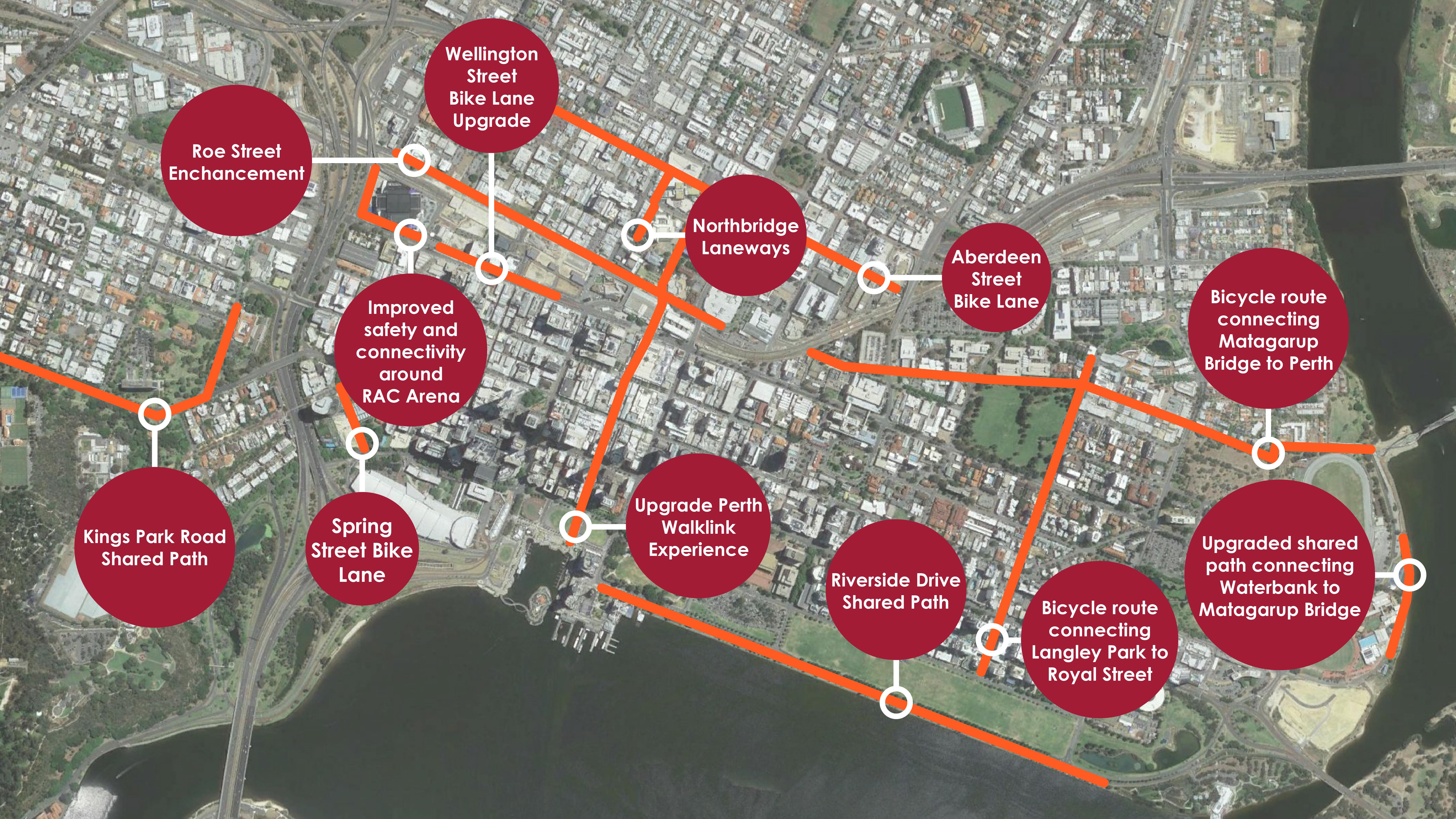FAQs - Perth Greater CBD Transport Plan
- Lack of pedestrian priority in some parts of the city causes travel time delays, overcrowding, safety risks and reduced amenity for pedestrians.
- Inadequate space, poor sightlines, different speed limits, and incorrect use of paths and shared spaces increases potential for conflict between pedestrians and bike riders.
- High volumes of vehicle and bus traffic in the city impact on the quality of the public realm and reduce the safety of pedestrians and bike riders.
- Crowded road networks during peak travel periods cause delays and unreliable journey times for vehicles and buses, increasing the cost of congestion and reducing bus patronage in the city.
- High demand for access to finite kerbside space in the city’s centre causes conflicts between the competing users and impacts economic productivity.
- Transport infrastructure and other physical barriers reduce connectivity between key destinations and the accessibility of public transport.
- Limited wayfinding and legibility make it difficult to navigate around the city.
- It can be difficult for people to understand their transit options in the city, limiting the use of public transport as an effective means of travel within the city.
- Reduced activity, substandard lighting, crime and a lack of security staff make people feel unsafe when walking, bike riding or catching public transport in the city at night.
- Lack of transport options to access some areas of the city is limiting economic benefits from further participation in cultural, education, health, retail, entertainment and tourism endeavours.
What areas are included in Perth Greater CBD?
The Perth Greater CBD refers to the area shown in the map below including the neighbourhoods of Crawley, Nedlands, West Perth, East Perth, Northbridge, Claisebrook and the central Perth CBD.

Why has this plan been developed?
Central Perth is undergoing the biggest transformation in its development history.
New destinations in and around the Greater CBD such as Yagan Square, Perth Children’s Hospital, Optus Stadium, and Elizabeth Quay have brought more vibrancy and activity to the city. With other major projects planned or underway it is vital we ensure our transport network can continue to support and improve the inner-city experience for everyone.
The Perth Greater CBD Transport Plan will identify the infrastructure, programs and services required to keep the Perth CBD moving as it grows, and how to get the best use from both new and existing infrastructure.
Transport planning for Perth’s Greater CBD also needs to help create great places for people. This means ensuring the transport system supports all users of the city centre including residents, workers and visitors such as tourists and locals looking to enjoy the cultural, retail, recreational and other attractions that our city offers.
Who was involved in the creation this plan?
The Perth Greater CBD Transport Plan is being developed by the Department of Transport in close consultation with the City of Perth and Transport Portfolio partners, the Public Transport Authority and Main Roads Western Australia.
Was there any consultation process for the plan?
The Perth Greater CBD Transport Plan was developed in consultation with key stakeholders across local and State Government, industry bodies, local businesses, residents, disability access and inclusion groups and the WA community.
An inner city local government workshop attended by representatives from City of Perth, City of Vincent, City of South Perth, City of Subiaco, City of Nedlands, Town of Victoria Park and Town of Cambridge was held in December 2018 to help identify key issues facing the city centre and surrounding areas.
An online survey and mapping activity took place between August and September 2019. Key stakeholders and interested community groups were invited to have their say on the development of the Plan.
The Department of Transport have provided a summary of the community feedback received relating to this Plan.
What are the proposed outcomes?
The Plan will deliver a 10-year vision for transport investment in the Perth CBD, and a five-year program of evidence-based initiatives.
Phase one of this Plan outlines 10 key problems that aim to be addressed (listed below). The soon to be published Phase Two of the plan will outline outcomes for each project.
